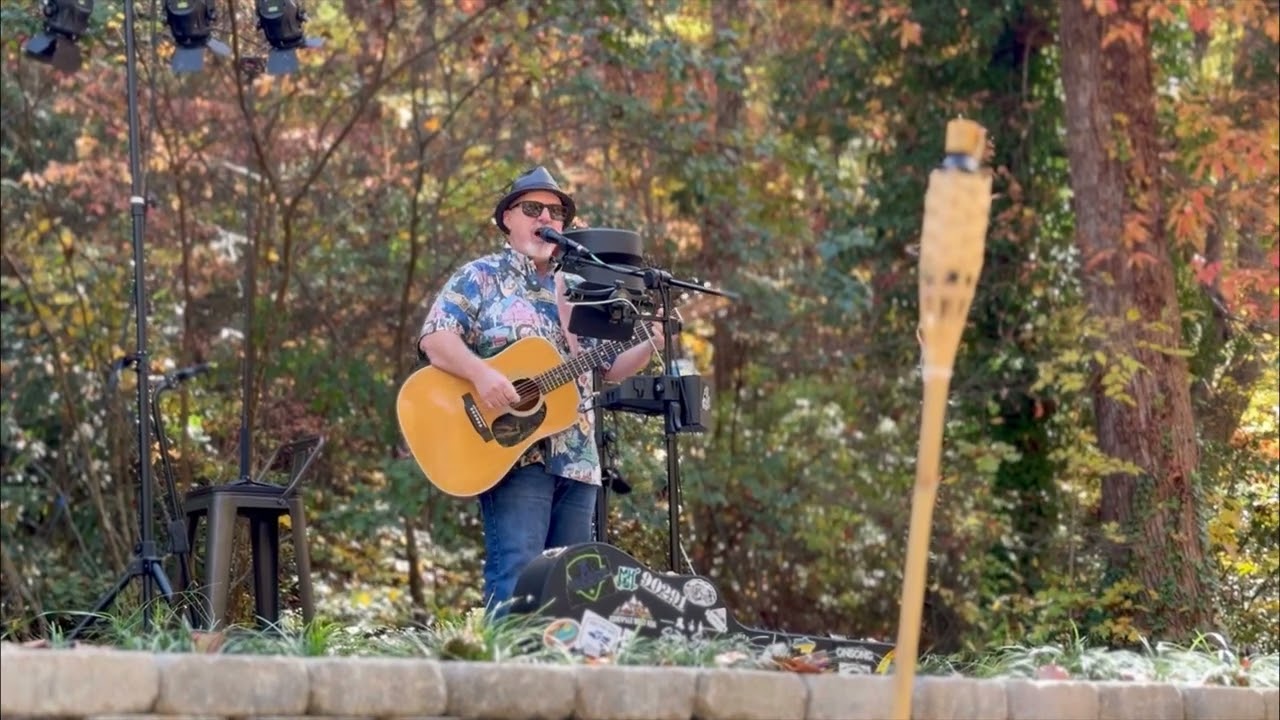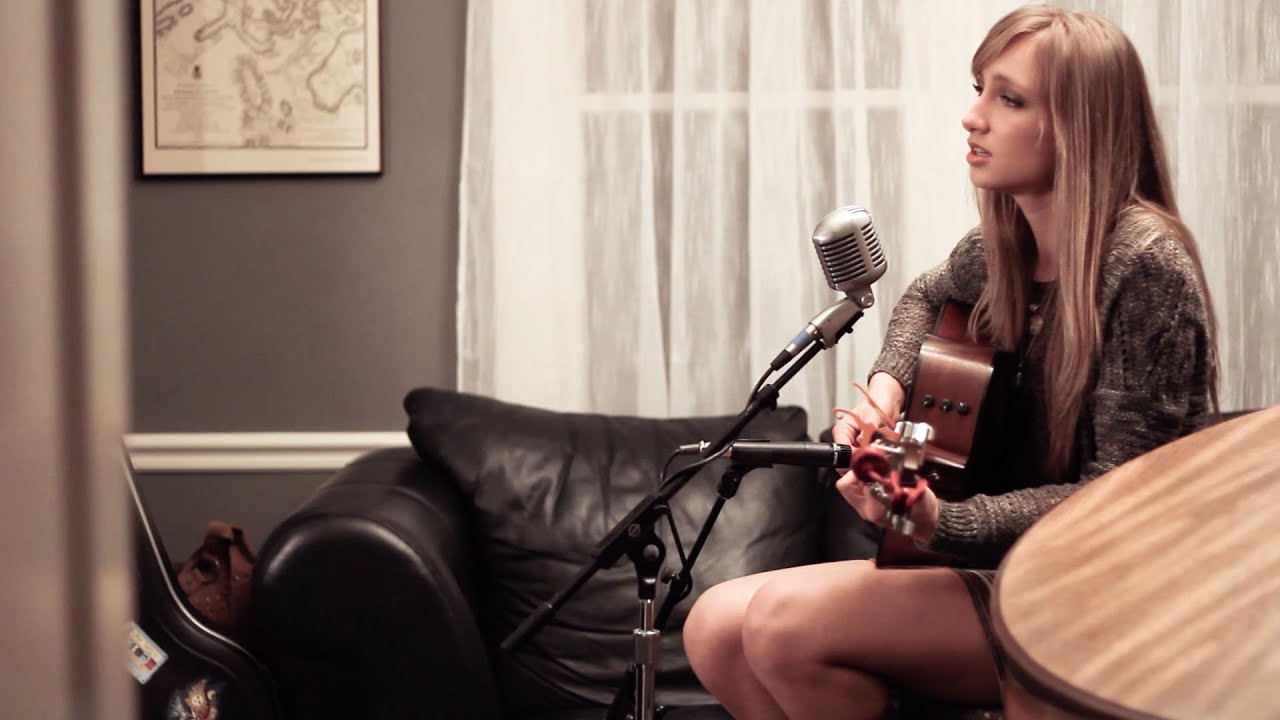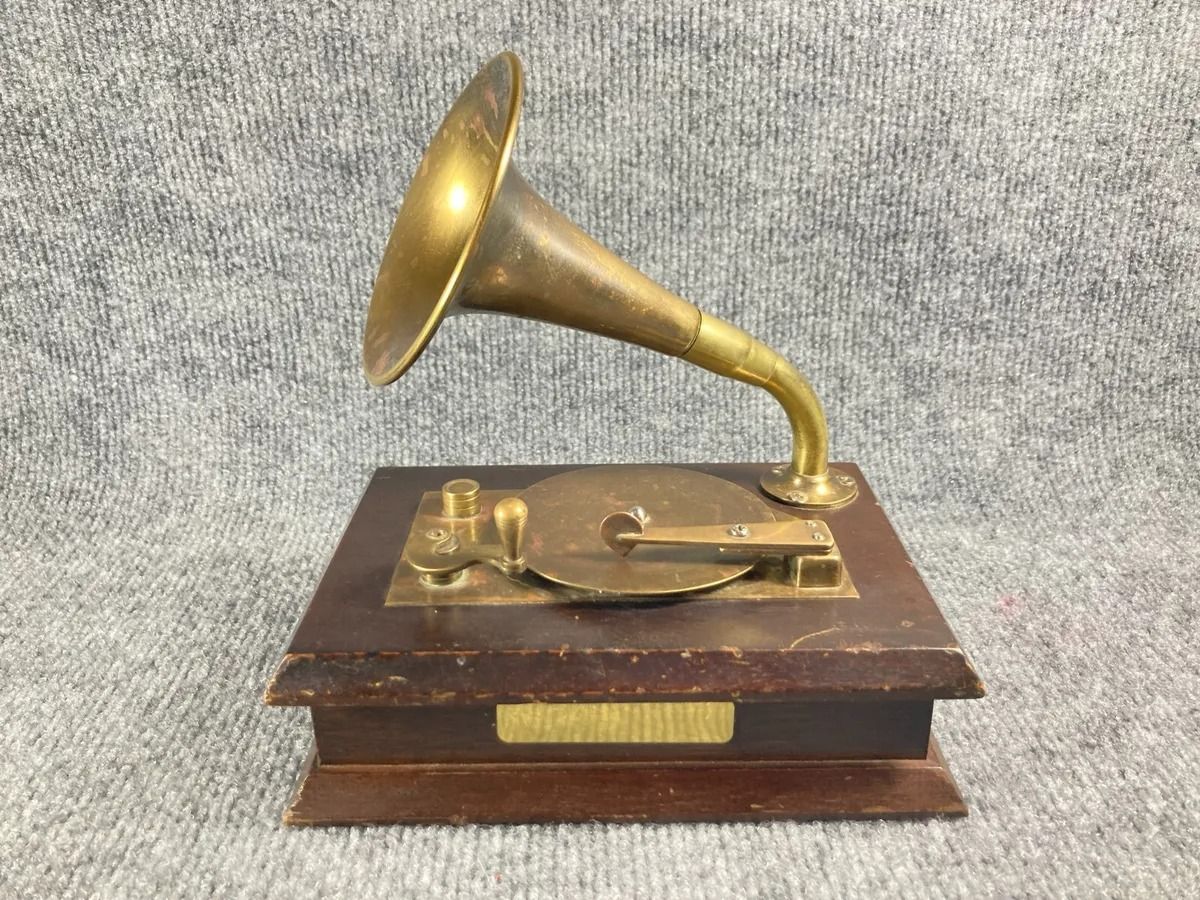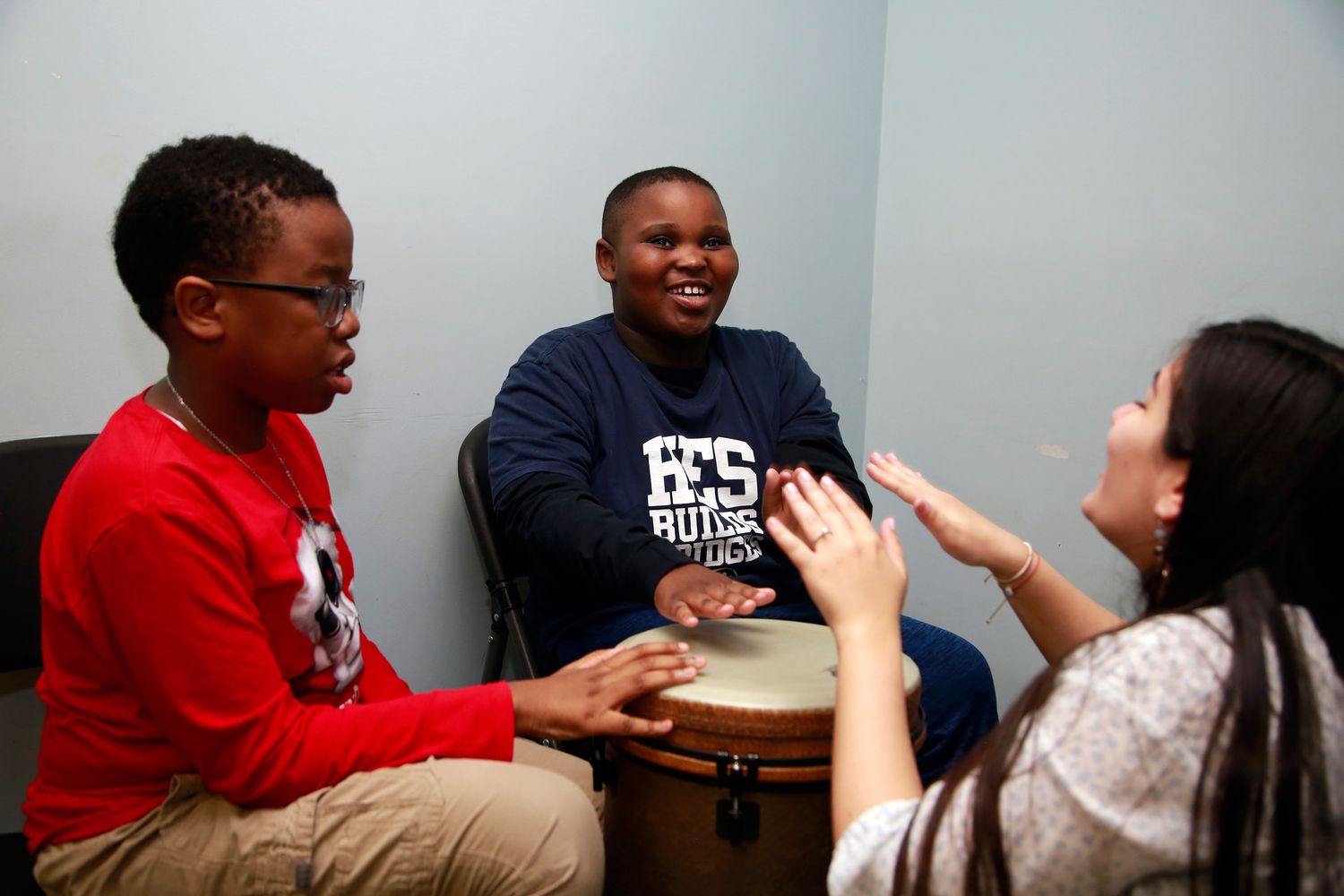

Folk
How To Master A Folk Song Recording
Modified: March 11, 2024
Learn the art of mastering a folk song recording with expert tips and techniques. Enhance your skills and achieve professional-quality results in your folk music productions.
(Many of the links in this article redirect to a specific reviewed product. Your purchase of these products through affiliate links helps to generate commission for AudioLover.com, at no extra cost. Learn more)
Table of Contents
Introduction
Welcome to the world of folk music recording! Folk music has a rich history and a unique charm that resonates with people of all ages. Whether you’re planning to record a traditional folk song or create your own original folk-inspired composition, this guide will provide you with the essential steps to master the art of recording a folk song.
Recording a folk song is more than just capturing the melody and lyrics. It’s about preserving the authenticity and soul of the music, while also ensuring a high-quality recording that does justice to the genre. In this article, we will explore the techniques and considerations necessary to produce a professional and captivating folk song recording.
Before we dive into the intricacies of the recording process, it’s important to choose the right folk song. The folk tradition is vast and diverse, with countless songs to choose from. Whether you prefer traditional ballads, protest songs, or contemporary folk tunes, selecting a song that resonates with you will help bring out your passion and creativity throughout the recording process.
Once you’ve chosen your folk song, it’s time to prepare your equipment. While you don’t need a professional studio setup, having the right tools will greatly enhance the quality of your recording. Consider investing in a good microphone, audio interface, and headphones to ensure clarity and fidelity in capturing the music.
Next, you’ll need to set up your recording space. Find a quiet and acoustically pleasing room where you can record without interference or unwanted ambient noise. You can improve the sound quality by using sound-absorbing panels, blankets, or even recording in a closet to minimize reflections and achieve a clearer sound.
In the following sections, we will delve into mic placement techniques to capture the best sound from your vocals and instruments. We’ll also discuss the importance of selecting appropriate instruments that complement the folk genre and tips for arranging the song to create an engaging musical experience.
Once you’re ready to record, it’s crucial to capture the performance with authenticity and emotion. Folk music is often characterized by its raw and genuine nature, so it’s essential to convey that in your recording. Don’t be afraid to experiment with different takes and capture multiple performances to find the one that captures the essence of the song.
After recording, you’ll move into the editing and mixing stage. This is where you can fine-tune the balance, EQ, and dynamics of each instrument and vocal track to create a cohesive and well-balanced mix. Adding effects and enhancements can also help enhance the overall sound and add depth to the recording.
Finally, we’ll explore the process of mastering a folk song recording. Mastering involves finalizing the mix and preparing it for distribution, ensuring it sounds professional and consistent across different playback devices. We’ll discuss the importance of mastering and provide tips to achieve a polished and cohesive final result.
So, if you’re ready to embark on the journey of capturing the beauty and essence of folk music through recording, let’s dive in and discover how to master a folk song recording!
Choosing the Right Folk Song
Choosing the right folk song is the foundation of a successful recording. The song you select will set the tone and evoke the emotions you want to convey. Whether you’re drawn to traditional folk songs or contemporary folk-inspired compositions, there are a few key factors to consider when making your choice.
First, think about the story or message of the song. Folk music often tells tales of love, loss, social issues, or historical events. Consider the lyrical content and the emotions it elicits. Does the song resonate with you personally? Is it something you can connect with and convey authentically? Picking a song that speaks to you will allow you to infuse your own passion and authenticity into the recording.
Next, think about the musical style of the song. Folk music encompasses a wide range of styles, from traditional ballads to more contemporary and experimental sounds. Consider your own musical preferences and the style that suits your voice and instrument choices. Whether you prefer a simple acoustic arrangement or a more elaborate production, choose a song that aligns with your creative vision.
Another important aspect to consider is the complexity of the song. Are you looking for a simple, stripped-down acoustic tune, or do you want a song with intricate melodies and chord progressions? Keep in mind your own skill level as a musician and your intended audience. If you’re just starting out or recording for a beginner audience, a more straightforward song might be a better choice.
Additionally, consider the cultural or regional significance of the song. Folk music often reflects the traditions and heritage of a specific culture or region. If you have a connection to a particular cultural background or want to explore the musical traditions of a specific area, selecting a folk song from that heritage can add depth and authenticity to your recording.
Lastly, don’t be afraid to put your own twist on a traditional folk song or choose a lesser-known composition. Folk music is a living tradition, and artists have been reimagining and reinventing songs for centuries. Adding your own unique interpretation or recording a lesser-known gem can bring freshness and originality to your folk song recording.
Remember, the goal is to choose a folk song that resonates with you, showcases your musicality, and allows you to deliver an authentic and heartfelt performance. Take your time to explore different songs, listen to various interpretations, and trust your instincts when selecting the right folk song for your recording project.
Preparing Your Equipment
Before you embark on your folk song recording journey, it’s essential to ensure that your equipment is in top shape. Having the right gear and making necessary preparations will result in a high-quality recording that captures the true essence of your performance.
The most crucial piece of equipment for any recording is a good microphone. Invest in a microphone that is suitable for capturing vocals and acoustic instruments. Condenser microphones are commonly used in folk music recordings due to their ability to capture detailed and nuanced performances. Consider factors like sensitivity, frequency response, and polar pattern when choosing a microphone that best suits your recording needs.
In addition to a microphone, you’ll need an audio interface to connect it to your computer. Audio interfaces convert analog audio signals into digital information that can be recorded and processed by your computer. Look for an interface with a high-quality analog-to-digital converter, appropriate input and output options, and stable drivers for seamless integration with your recording software.
Having a reliable pair of headphones is also important for monitoring and making precise adjustments during the recording and mixing process. Look for headphones that provide a flat frequency response to accurately represent the sound you’re capturing. Closed-back headphones can help isolate the audio and reduce bleed from external sources, while open-back headphones offer a more spacious and natural sound.
Before recording, make sure all your equipment is in good working condition. Check your microphone and cables for any signs of damage or malfunction. Clean your microphone and other gear to ensure optimal performance and longevity. Additionally, keep spare cables and accessories on hand in case of emergencies.
In terms of recording software, there are various options available, ranging from comprehensive digital audio workstations (DAWs) to simpler recording programs. Choose a software that suits your skill level and offers the necessary features for recording, editing, and mixing your folk song. Familiarize yourself with the software’s interface and functions to ensure a smooth recording process.
Lastly, organizing your recording sessions can greatly improve efficiency. Create a folder system on your computer to keep track of your files, including separate folders for raw audio, edited tracks, and final mixes. Develop a naming convention that allows you to easily identify and locate specific recordings. By keeping your equipment organized and well-maintained, you’ll spend less time troubleshooting and more time focusing on the creative process.
By properly preparing your equipment, you ensure that you have reliable gear that delivers a clean and accurate representation of your performance. Take the time to invest in quality microphones, audio interfaces, headphones, and software, and maintain your equipment to maximize its lifespan. With your equipment in top condition, you’ll be ready to embark on your folk song recording adventure with confidence and enthusiasm.
Setting Up Your Recording Space
Creating the right environment for your folk song recording is crucial to achieving a high-quality and professional sound. While you may not have access to a dedicated recording studio, there are steps you can take to optimize your recording space and minimize unwanted noise and distractions.
First and foremost, choose a quiet room for your recording setup. Look for a space that is away from heavy foot traffic, outside noise, and other potential sources of distractions. If possible, select a room that has minimal echo and reflections, as this will help capture a clean and natural sound.
If you’re recording in a home or non-professional environment, you may encounter background noise from appliances, HVAC systems, or outside disturbances. Before recording, identify and mitigate any potential noise sources. Turn off fans, air conditioners, and appliances that may create unwanted noise. Close windows and doors to minimize outside sounds. Consider using sound-absorbing materials such as curtains, blankets, or acoustic panels to reduce reflections and improve the acoustics of the room.
Another consideration is the size of the room. While larger rooms may provide a more natural reverb, they can also result in more ambient noise and reflections. Smaller rooms or spaces with a lot of furniture and soft materials can help absorb sound and create a more controlled recording environment. Experiment with different spaces within your recording area to find the one that provides the best balance between spaciousness and sound quality.
When setting up your recording space, pay attention to the placement of your equipment. Position your microphone and speakers away from walls and corners to minimize any coloration or unwanted resonances that can occur from close proximity to surfaces. Test different angles and placements to find the sweet spot where you capture the best sound without compromising on the natural ambiance.
If you’re recording acoustic instruments, such as guitars or pianos, consider the placement of the instrument in the room. Experiment with different positions to find the spot that offers the best balance of tone and presence. You can also use room microphones to capture the natural acoustics of the space, adding depth and dimension to your recording.
Lastly, keep in mind the comfort of the performers. Ensure that they have enough space to move and perform comfortably without feeling cramped. Provide adequate seating or standing positions for each musician to optimize their playing position and ergonomics.
Setting up your recording space may require some trial and error, but taking the time to optimize the environment will greatly impact the quality of your folk song recording. By choosing a quiet and controlled room, minimizing background noise, and strategically placing your equipment, you’ll be well on your way to capturing a professional and captivating sound.
Mic Placement Techniques
The placement of your microphone plays a crucial role in capturing the best possible sound for your folk song recording. The mic placement technique you choose will depend on the instrument or vocals you are recording and the specific sound you want to achieve. Let’s explore some common mic placement techniques that can help you capture the essence and nuances of your performance.
When recording vocals, the most common approach is to place the microphone directly in front of the singer, at a distance of about 6-12 inches. This allows the mic to capture the fullness and detail of the vocals while minimizing any unwanted plosives or sibilance. Experiment with the angle and position of the microphone to find the sweet spot that best captures the singer’s voice.
For acoustic instruments like guitars, the placement can vary depending on whether you want to capture the sound of the instrument from a player’s perspective or from a listener’s perspective. Placing the microphone near the soundhole of the guitar will emphasize the low-end frequencies and provide a fuller sound. Alternatively, positioning the microphone near the 12th fret or at a distance from the guitar captures a more balanced and natural sound.
When recording a full band or ensemble, it’s important to consider the instrument’s placement in relation to each other and the desired stereo image. The use of multiple microphones and mic placement techniques such as the XY technique or the spaced pair technique can help capture a realistic and immersive stereo sound.
The XY technique involves placing two microphones in a crossed pattern, with one mic angled at 90 degrees and the other at a 135-degree angle. This technique provides a focused and coherent stereo image, making it particularly suitable for capturing instruments that have a strong directional sound, such as a solo violin or a single vocalist.
The spaced pair technique involves placing two microphones at a distance from each other, typically several feet apart. This technique captures a wider stereo field and is well-suited for recording larger ensembles or capturing the ambiance of a room. Experiment with the distance between the microphones to find the optimal stereo image for your specific recording.
Keep in mind that mic placement can greatly affect the recording’s overall sound. By moving the microphone closer to the source, you’ll capture more direct sound and minimize room reflections. Conversely, moving the microphone farther away contributes to a more ambient and spacious sound. Be sure to listen and make adjustments during the recording process to achieve the desired results.
Remember, mic placement is an art, and there’s no one-size-fits-all approach. Trust your ears and experiment with different techniques to find the mic placement that best captures the essence of your folk song recording. By carefully considering the instrument or vocals you’re recording and making subtle adjustments, you’ll be able to achieve a balanced and professional sound that enhances the beauty and authenticity of your folk music.
Selecting the Right Instruments
The choice of instruments you use in your folk song recording greatly influences the overall sound and character of the music. Folk music embraces a wide range of instruments, both traditional and contemporary, each bringing its own unique timbre and texture to the composition. When selecting the right instruments for your folk song recording, consider the following factors:
Authenticity: Folk music is deeply rooted in tradition and cultural heritage. Choosing instruments that are commonly associated with the genre can add an authentic touch to your recording. Instruments such as acoustic guitars, banjos, fiddles, mandolins, and harmonicas are staples in folk music and can evoke a familiar and cherished sound. However, it’s also important to be open to experimentation and incorporating unconventional or modern instruments to create your own unique folk sound.
Tonal Quality: Each instrument has its own distinct tonal qualities that contribute to the overall sonic palette of your recording. Consider the texture and characteristics you want to emphasize in your song. For example, a resonator guitar can add a bright and twangy sound, while a cello can bring richness and depth. Experiment with different instruments to find the ones that complement the mood and emotions of your folk song.
Instrument Combination: Folk music often thrives on the interplay of multiple instruments. Think about how the instruments will interact with each other and create a harmonious blend. Consider their individual roles, whether it’s providing the melody, rhythm, or harmonic support. Pay attention to the balance between the instruments to ensure that no one instrument dominates the mix. A well-chosen combination of instruments can create a captivating and cohesive sound that enhances the storytelling of your folk song.
Versatility: Folk music is known for its versatility and adaptability. When selecting instruments, consider their versatility in fitting different styles and moods within the folk genre. Instruments like the acoustic guitar and piano lend themselves well to various folk subgenres, from introspective ballads to lively sing-alongs. As you experiment and explore different folk songs, you may discover that certain instruments resonate more strongly with your creative style and preferences.
Personal Connection: Ultimately, choose instruments that resonate with you personally. Your emotional connection to the instruments you play will shine through in your performances and recordings. Select instruments that inspire and ignite your passion for folk music. By playing instruments that you feel a deep connection with, you’ll be able to deliver more expressive and heartfelt performances.
Remember, there are no strict rules when it comes to selecting instruments for your folk song. Every artist has their own unique vision and creative voice. Embrace the opportunity to experiment with different instruments and combinations to find the ones that best capture the spirit and emotion of your folk music. Whether you choose traditional instruments or explore unconventional options, the key is to create a sound that resonates with you and enhances the narrative of your folk song recording.
Arranging the Song
The arrangement of your folk song is where you can showcase your creativity and bring your unique vision to life. A well-crafted arrangement can enhance the emotional impact of the song and create a captivating musical experience. When arranging your folk song, consider the following aspects:
Instrumentation: Determine which instruments will play a role in your arrangement. Consider the primary instrument or instruments that will carry the melody and harmonies, as well as the supporting instruments that provide rhythm and texture. Balance the use of different instruments to create a cohesive and balanced sound.
Dynamics: Pay attention to the dynamics of your arrangement. Varying the volume and intensity throughout the song can create tension, emphasize certain sections, and add depth to the overall sound. Experiment with different levels of volume and intensity to bring out the emotions and nuances of the lyrics and melody.
Harmonies: Explore harmonies to enrich the melodic content of your folk song. Whether it’s through accompanying vocal harmonies or instrumental harmonies, consider how they can complement and enhance the main melody. Experiment with different chord progressions and harmonic structures to create a pleasing and interesting arrangement.
Rhythmic Patterns: Folk music often relies on rhythmic patterns to drive the song forward. Consider incorporating strumming patterns, fingerpicking techniques, or percussive elements to create a rhythmic foundation. Pay attention to the groove and feel of the song, ensuring that the rhythm supports and enhances the lyrics and melody.
Verse and Chorus Structure: Take into account the structure of your song, particularly the verse and chorus sections. Determine how the arrangement will vary between these sections to create a sense of progression and build-up. Experiment with different instrumentations and dynamics to distinguish between the verses and choruses, adding interest and dynamics to your arrangement.
Transitions: Smooth transitions between different sections of the song are essential for a cohesive arrangement. Consider transitional elements such as instrumental fills, brief solos, or vocal adlibs to bridge the gap between sections. These transitions can maintain the listener’s interest and add a sense of continuity to your arrangement.
Silence and Space: Don’t overlook the power of silence and space in your arrangement. Leaving moments of silence or minimal instrumentation can create impact and allow the lyrics and melodies to breathe. Strategic use of silence and space can evoke emotions and highlight certain phrases or instrumental passages in your folk song.
Remember, arranging a folk song is a creative process, and there’s no one-size-fits-all approach. Experiment with different instrumentation, dynamics, harmonies, and rhythmic patterns to find the arrangement that best suits the story and emotions you want to convey. Keep an open mind and trust your instincts as you craft an arrangement that brings out the beauty and authenticity of your folk song.
Capturing the Performance
When it comes to recording a folk song, capturing a heartfelt and genuine performance is key to capturing the essence of the genre. Folk music thrives on the raw emotions and authenticity of the artist, and it’s important to create an environment that allows for a captivating and inspired performance. Here are some tips for capturing the best possible performance:
Create a Comfortable Environment: Make sure the performer feels at ease in the recording space. Create a comfortable and relaxed atmosphere that allows them to fully express themselves. Eliminate distractions and foster a supportive environment that allows the artist to connect deeply with the song and deliver an emotive performance.
Encourage Multiple Takes: Folk music often benefits from the intimacy and uniqueness of individual performances. Encourage the artist to record multiple takes of the song. This allows them to explore different nuances and interpretations. Multiple takes can capture the raw emotions and spontaneous moments that give folk music its charm.
Embrace Imperfections: Folk music celebrates imperfections and the richness they bring. Don’t be too fixated on achieving a flawless performance. Embrace the quirks, cracks, and imperfections in the vocalist’s voice or the instrument’s sound. These nuances add character and authenticity to the recording.
Encourage Emotive Delivery: Folk music is deeply rooted in storytelling and emotion. Encourage the performer to connect with the lyrics and melodies on a personal level, allowing the emotions to shine through in their delivery. Encourage them to experiment with dynamics, phrasing, and subtle nuances to convey the essence of the song.
Experiment with Mic Techniques: The microphone plays a crucial role in capturing the performance. Experiment with different microphone techniques to find the one that best captures the desired sound and vibe. Close-miking can provide a more intimate and detailed sound, while capturing the performer from a distance can create a more spacious and ambient feel.
Focus on Communication: Open and clear communication between the artist and the recording engineer is essential. Discuss the vision and emotions behind the song to ensure everyone is on the same page. Encourage the performer to share their thoughts and ideas, as this fosters a collaborative environment that brings out the best in their performance.
Capture the In-Between Moments: Don’t just focus on the actual performance—capture the moments between takes as well. Authentic and spontaneous moments can happen in these in-between periods. They can add a human touch and provide glimpses into the artist’s personality, creating a more intimate connection with the listener.
Remember, capturing an engaging and captivating performance is at the heart of folk music recording. Create a comfortable and supportive environment that allows the artist to fully express themselves. Encourage multiple takes, embrace imperfections, and focus on the emotional delivery of the song. By capturing the genuine emotions and individuality of the performer, you’ll create a folk song recording that resonates deeply with listeners.
Editing and Mixing the Recording
Once you have captured the performances for your folk song recording, the next step is to dive into the editing and mixing process. Editing allows you to refine the recorded tracks, while mixing is the art of blending the individual elements together to create a cohesive and balanced final mix. Here are some key steps to consider when editing and mixing your folk song recording:
Organization: Begin by organizing your recorded tracks in your chosen digital audio workstation (DAW). Label each track appropriately and arrange them in a logical order. This will make the editing and mixing process more efficient and streamlined.
Editing: Listen through each track and make any necessary edits to enhance the overall performance. This may involve removing unwanted noises, correcting timing issues, or fine-tuning individual sections. Be careful not to over-edit, as you want to maintain the natural and organic feel of the folk music.
Track Cleaning: Use noise reduction tools or plugins to clean up any unwanted background noise or hiss that may have been captured during the recording process. Be mindful not to overdo it, as removing all noise can make the recording sound unnatural.
EQ and Balance: Use EQ (equalization) to sculpt the tone of each track and create a pleasing balance in the mix. Pay attention to the frequency range of each instrument or vocal and make adjustments to ensure they sit well together. Boosting or cutting specific frequencies can help bring out the desired elements and create clarity in the mix.
Dynamic Processing: Apply compression, limiting, and other dynamic processing techniques to control the dynamic range of your tracks. This ensures that the softer parts are audible without compromising the clarity of the louder sections. Use your ears to find the right balance and achieve a consistent and polished sound.
Panning and Stereo Imaging: Experiment with panning and stereo placement to create a sense of space in your mix. Spread out the instruments and vocals across the stereo field to achieve a balanced and immersive sound. Consider the role each instrument plays in the composition and position them accordingly.
Reverb and Effects: Add reverb and other effects to create depth and ambiance in your mix. Choose reverbs and effects that suit the style of your folk song and enhance the overall mood you want to create. Be mindful of not overpowering the mix with excessive effects, as the goal is to enhance the recording, not overshadow it.
Automation: Utilize automation to add movement and dynamics to your mix. Automate levels, panning, and effects parameters to create excitement and highlight key sections of the song. This allows you to shape the energy and intensity of the mix, making it more engaging for the listener.
Reference Tracks and Listening: Take breaks and listen to your mix on different playback systems to ensure it translates well across different mediums. A/B compare your mix with reference tracks from professional folk recordings to understand how they achieve the desired sound. Continuously evaluate and make adjustments to achieve the best possible mix.
Remember, the editing and mixing process is where you can take your raw recordings and shape them into a polished and professional final product. It requires careful attention to detail, a good understanding of the tools at your disposal, and trust in your ears. By applying these techniques and ensuring a balanced and cohesive mix, you’ll create a folk song recording that captures the essence and beauty of the genre.
Adding Effects and Enhancements
Once you have completed the editing and mixing process for your folk song recording, it’s time to add the final touches that will enhance the overall sound and bring your recording to life. Adding effects and enhancements can elevate the emotional impact of the song and add depth to the mix. Here are some key considerations when incorporating effects and enhancements:
Reverb and Ambiance: Reverb is a crucial effect in creating a sense of space and depth in your recording. Experiment with different types and amounts of reverb to find the right balance. Consider the size of the virtual room or space you want to create and adjust the decay time and predelay settings accordingly. Be mindful of not overusing reverb, as it can make the mix sound too washed out or distant.
Delay and Echo: Delays and echoes can add texture and dimension to your folk song recording. Experiment with different delay settings to create rhythmic echoes or cascading repetitions. Adjust the feedback and time settings to achieve the desired effect. Use delay sparingly and purposefully to enhance specific moments or instruments in the mix.
Modulation: Modulation effects such as chorus, flanger, and phaser can add movement and color to your mix. Apply these effects subtly to create a sense of depth and animation. Experiment with different settings and adjust the intensity to achieve the desired effect without overpowering the natural sound of the instruments.
EQ Sculpting: Fine-tune the tonal balance of your mix by employing EQ enhancements. Use gentle boosts or cuts to accentuate certain frequencies, while being mindful of not introducing excessive processing that may alter the natural sound of the instruments. Pay attention to any resonant frequencies or problematic areas and make targeted adjustments to alleviate them.
Stereo Widening: Enhance the stereo image of your mix by employing stereo widening techniques. This can make the mix sound more spacious and immersive. Use stereo enhancement plugins or techniques like stereo widening, mid/side processing, or panning to create a wider stereo field. Be cautious not to overdo it, as excessive widening can lead to an artificial or unnatural sound.
Enhancing Vocal Effects: If you have recorded vocals, consider adding additional effects to enhance their impact. Use light compression to control dynamics and add consistency to the vocal performance. Experiment with subtle chorusing or doubling effects to create a thicker or wider vocal sound. Be mindful of preserving the clarity and intelligibility of the vocals while adding enhancements.
Automation: Incorporate automation to add movement and variation to your mix. Gradually change effect parameters, such as reverb sends or delay levels, to create dynamic and engaging moments in the song. Utilize automation to introduce effects during specific sections or to highlight instrumental or vocal passages.
Subtle Enhancements: Sometimes, small but intentional enhancements can make a big difference in the overall mix. Consider adding subtle background textures, subtle fades or swells, or using gentle saturation or tape emulation plugins to add warmth and character to your recording. These enhancements can contribute to the overall vibe and atmosphere of your folk song.
Trust Your Ears: While effects and enhancements can greatly enhance your mix, it’s important to trust your ears and exercise restraint. The goal is to enhance the natural essence of the folk song, not to overshadow it. Always listen critically and make adjustments that serve the song and enhance the emotional impact.
By carefully selecting and applying effects and enhancements, you can elevate your folk song recording to a new level of depth and emotion. Take the time to experiment and fine-tune the effects to create a mix that is true to the spirit of the genre and resonates with your listeners.
Mastering the Folk Song Recording
Mastering is the final stage in the music production process and is crucial for achieving a polished and cohesive sound for your folk song recording. Mastering enhances the overall sonic quality, balances the frequencies, and ensures a consistent playback experience across different devices and platforms. Here are some key steps to consider when mastering your folk song recording:
EQ and Compression: During mastering, the frequency balance and dynamics of the entire mix are refined. A mastering engineer uses EQ to balance the overall tonal spectrum, ensuring that each instrument and vocal sits harmoniously in the mix. Compression is applied to control the dynamics and enhance the overall impact of the song.
Clarity and Loudness: Mastering helps achieve a clear and well-defined sound. The mastering engineer applies techniques and tools to enhance clarity and intelligibility, ensuring that each element of the mix is audible and well-balanced. Additionally, they address loudness and use techniques such as limiting and maximizing to achieve a competitive volume level while preserving the dynamics.
Stereo Imaging: The stereo image of the mix is carefully evaluated and adjusted during mastering. The mastering engineer ensures that the mix translates well in both mono and stereo playback systems, creating a wide and immersive soundstage. They may make subtle adjustments to the panning, stereo width, and depth to optimize the listening experience.
Overall Cohesion: Mastering helps bring consistency and cohesion to the entire album or collection of songs. The mastering engineer ensures that each track flows naturally into the next, taking into consideration the track order, gaps between songs, and overall sonic coherence. They make any necessary adjustments to levels, EQ, and dynamics to create a cohesive listening experience from start to finish.
Quality Control: During the mastering stage, meticulous attention is given to detail and ensuring the accuracy of the final product. The mastering engineer carefully checks for any potential technical issues, such as clicks, pops, and distortion, and addresses them accordingly. They also verify that the final master complies with industry standards and formats for distribution.
Listening in Different Environments: It’s important to listen to the mastered version of your folk song recording in various listening environments and on different playback devices. This allows you to verify the integrity of the master and ensure that it translates well across various systems, from headphones to car speakers to professional studio monitors.
Collaboration with a Mastering Engineer: While some musicians choose to master their recordings themselves, collaborating with a professional mastering engineer can provide a fresh perspective and expertise in achieving optimal results. A mastering engineer has the specialized tools, experience, and objective ears to fine-tune your folk song recording and bring out its full potential.
Remember, mastering is the final step in the production process, and its purpose is to refine and enhance the sonic qualities of your folk song recording. Whether you choose to master your recording yourself or collaborate with a mastering engineer, the goal is to achieve a polished and cohesive sound that showcases the beauty and authenticity of your folk music.
Conclusion
Capturing and mastering a folk song recording is a journey that requires a combination of technical knowledge, creative vision, and a deep appreciation for the genre. Throughout this article, we explored the crucial steps involved in creating a professional and captivating folk song recording. From choosing the right folk song and preparing your equipment to setting up a suitable recording space, capturing authentic performances, and applying the final touches through editing, mixing, and mastering, every aspect plays a significant role in bringing out the essence and beauty of folk music.
Folk music is a rich and diverse genre that allows for creativity, storytelling, and emotional expression. It’s important to honor the traditions while also imbuing your recording with your personal touch and unique interpretations. By carefully selecting instruments that resonate with the genre, arranging the song to create a cohesive and engaging experience, and capturing heartfelt performances, you can create a folk song recording that connects deeply with listeners.
Throughout the recording process, it’s essential to maintain authenticity and allow for the natural imperfections that give folk music its charm. While editing, mixing, and mastering your recording, remember to trust your ears and exercise restraint, ensuring that the essence and spirit of the music shine through.
Whether you’re recording a traditional folk ballad or a contemporary folk-inspired composition, the journey of capturing a folk song is a labor of love. It requires patience, dedication, and a deep appreciation for the craft. Embrace the process, experiment with different techniques, and let your passion for folk music guide you in producing a folk song recording that reflects your artistic vision and resonates with audiences.
So, pick up your instruments, find inspiration in the rich heritage of folk music, and embark on your own adventure of mastering a folk song recording. The beauty and authenticity of this genre are waiting to be beautifully captured and shared with the world.











